Europe’s most beautiful historic restaurants
Feast for the senses
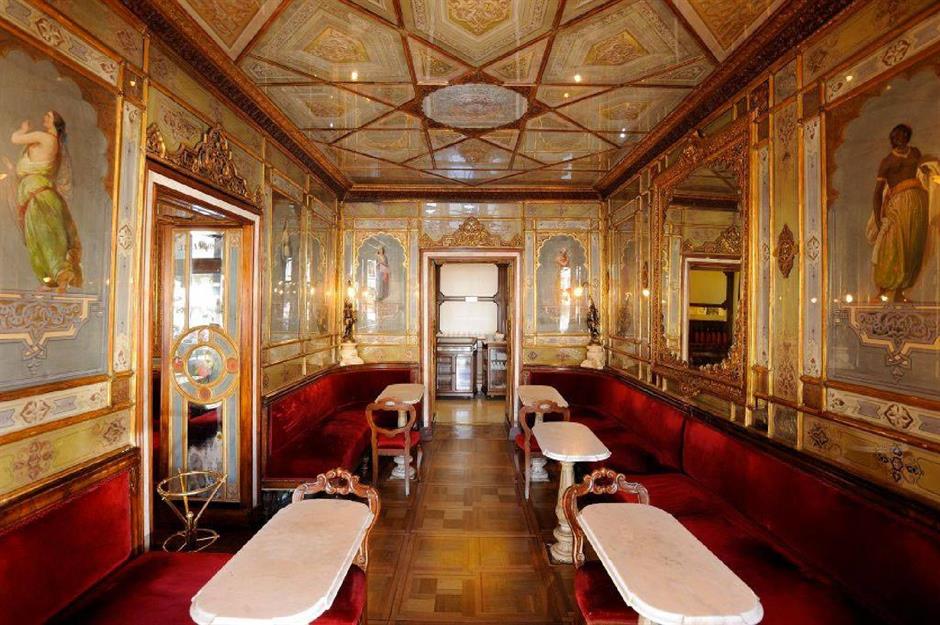
They say we eat with our eyes – and sometimes that goes beyond prettily presented food. Europe is home to many restaurants that have seen diners come through their doors (and feast within their walls) for decades and even centuries. From palatial dining rooms fit for royalty to brasseries with more rustic charms, these are the most beautiful historic restaurants across Europe.
Click or scroll through to see the top 25 stunning historic restaurants in Europe, counting down to the most beautiful.
We've based our ranking on the enduring popularity of each beautiful historic restaurant in its place of origin and beyond, and on the opinions of our well-travelled (and well-fed) team. The list is unavoidably subjective.
25. La Campana, Rome, Italy
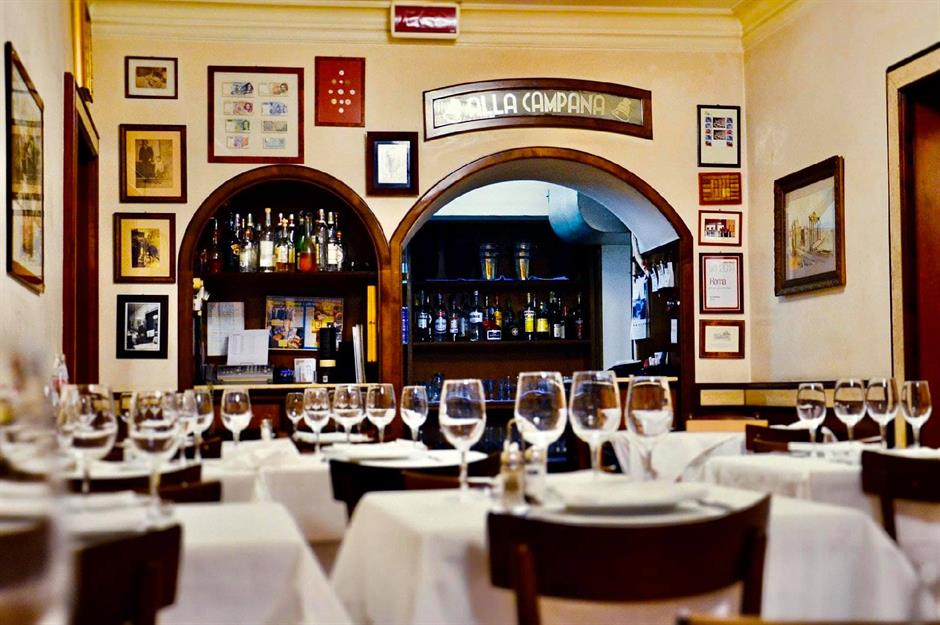
It may not drip with crystal or be dressed up in gold like some of the spots on our list, but La Campana is beautiful in its simplicity. Rome’s oldest restaurant opened in 1518 as an inn for forestieri (strangers, or out-of-town visitors) and was one of director Federico Fellini’s favourite spots in the 1960s. Little has changed, from the menu of traditional Roman dishes to the wood-framed alcoves, crisp tablecloths and impeccable service. The location is incredible, too, with the Piazza Navona and the Pantheon a short stroll away.
24. Haci Abdullah, Istanbul, Turkey
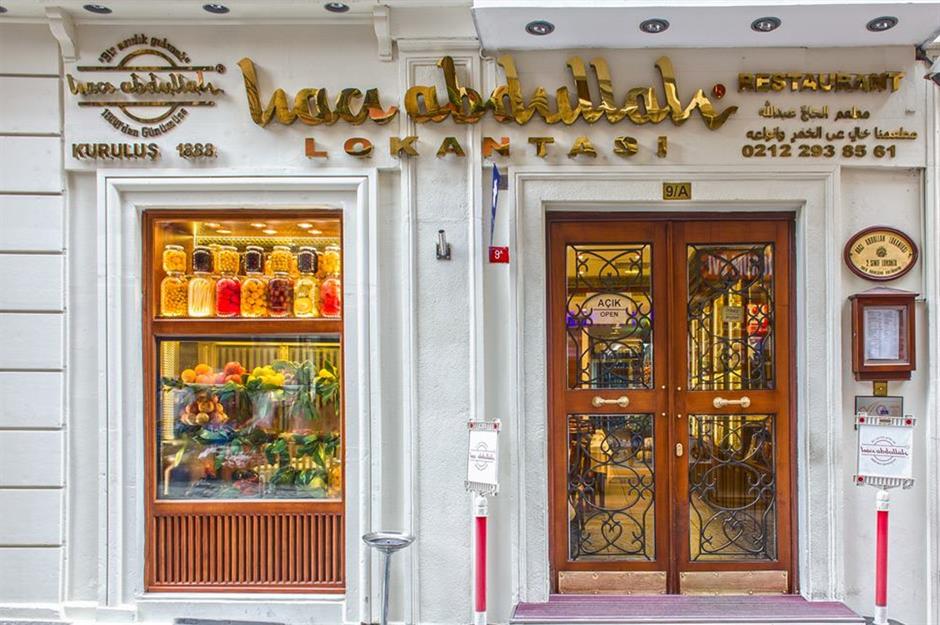
The window display at Haci Abdullah offers a taste of what’s to come: rows of jars filled with preserved vegetables, pickles, chickpeas, olives and dried fruits, as beautiful to look at as they are to eat when used in traditional dishes and decadent desserts. The restaurant opened in 1888 and boasts a plush interior with maroon walls, tulip motifs, a gilded imperial seal and a stunning stained-glass dome.
23. Zur Letzten Instanz, Berlin, Germany
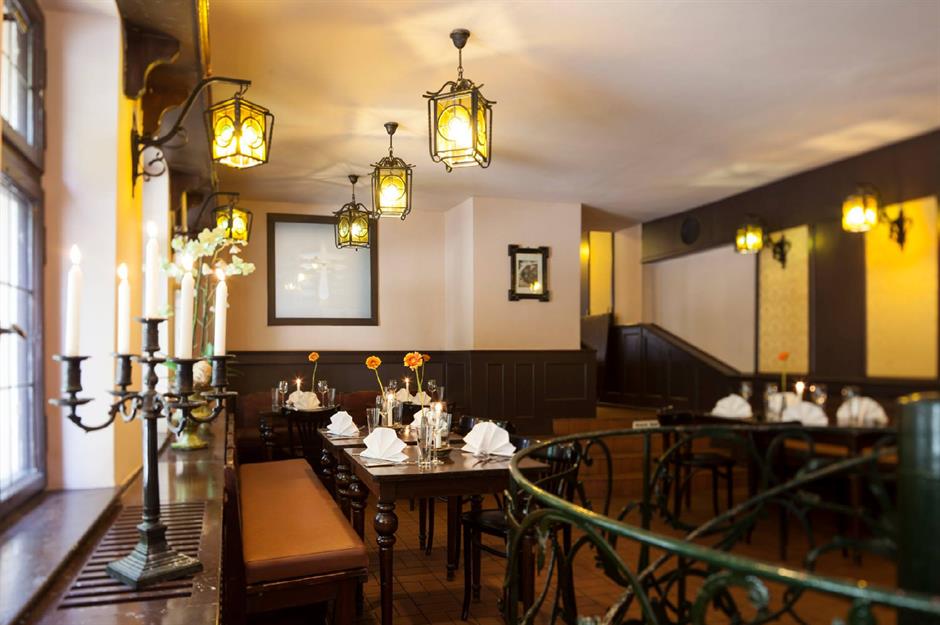
Zur Letzten Instanz, built in 1621, is Berlin’s oldest restaurant and cleverly marries old and new throughout. The exterior is a polished take on a typical historic inn, with wooden shutters and lanterns flanking the door. The menu, too, features upgraded German classics made with local and seasonal ingredients, served in an interior with clean, elegant lines and rich historic details like wood carvings. The courtyard, with tables shaded by trees and lit by paper lanterns at night, is super-pretty too.
22. Brasserie Georges, Lyon, France
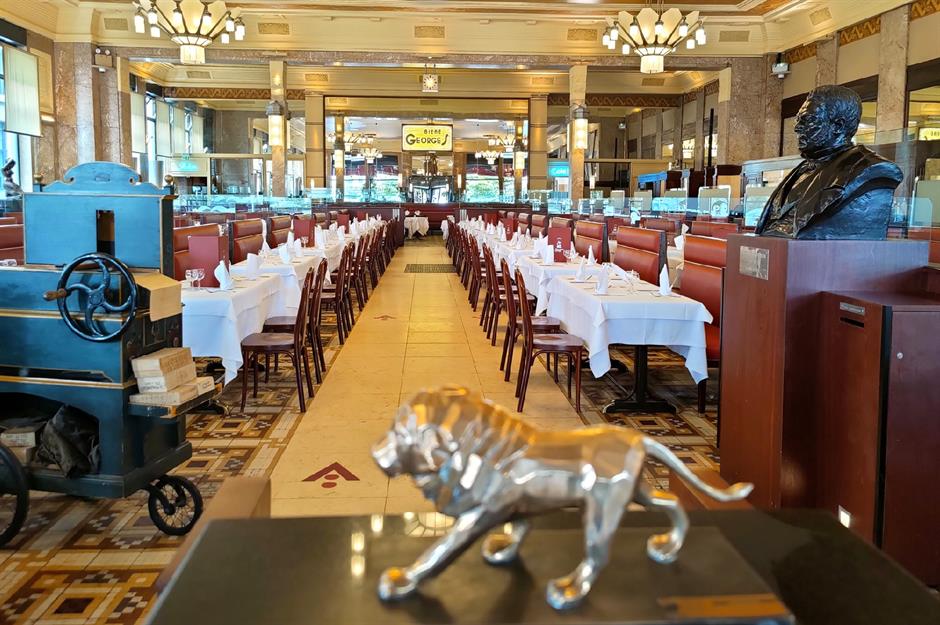
One might describe the aesthetic of Brasserie Georges’ interior as something like a very grand train station in the 1930s, and as it happens it’s just behind Lyon’s central Perrache station. There are several Art Deco–style dining rooms, each equally, timelessly elegant with shades of deep red, bronze statues, tables covered with crisp white cloths, and vintage posters on the walls. The restaurant, which opened in 1836 as a brewery with food, serves hearty Lyonnaise cuisine and craft beer.
21. Ristorante Buca San Giovanni, Florence, Italy
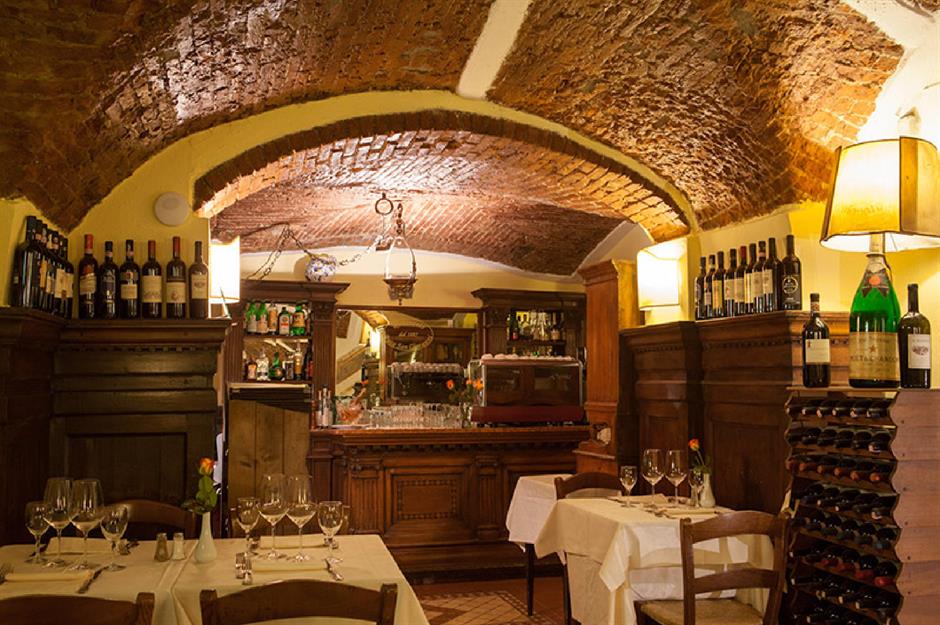
Centuries had already left their imprint on this Florence building when Ristorante Buca San Giovanni moved in here in 1882. It was originally a church edifice, dating back to the 14th century, and it’s said that the cellar was used for secret meetings by a mysterious medieval religious group called the Rosa Croce (or Rose Cross) society. The restaurant sensitively occupies its sumptuous, storied surroundings, serving classic Tuscan dishes beneath low, curved stone ceilings and under the watchful gaze of pious statues.
20. Restaurant u Malířů 1543, Prague, Czechia
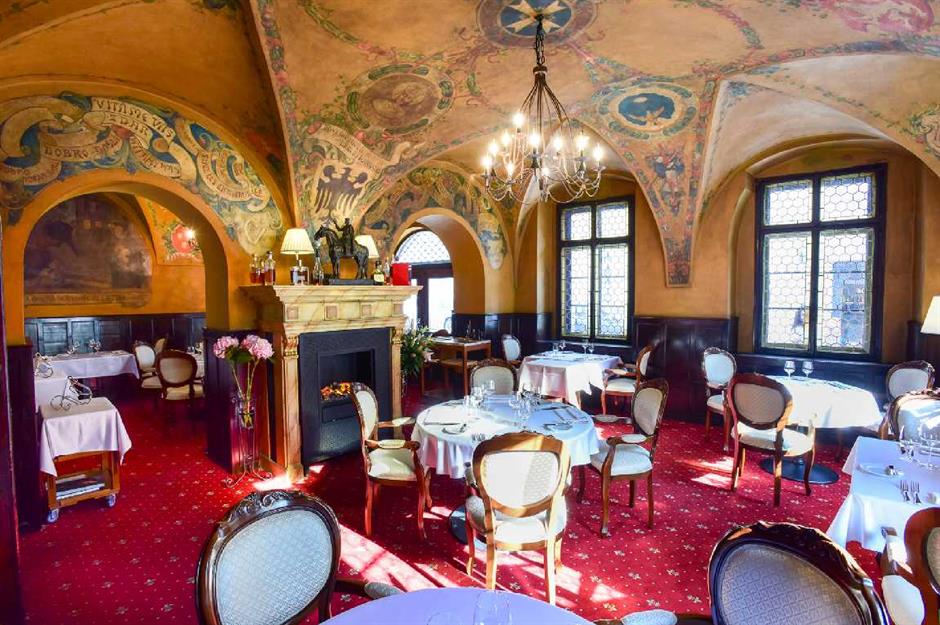
The history of Restaurant u Malířů 1543 stretches back centuries. Attached to the rampart of a Maltese church and monastery, it was purchased by painter Šic in 1543, when it became known as 'u Malířů' or 'at the painters'. It’s been a popular gathering spot since the early 19th century and, thanks to its popularity with cash-strapped artists, murals offered in lieu of payment adorn the walls. The refurbished restaurant serves modern Czech cuisine with French influences in a dining room with vaulted, frescoed ceilings, plush carpets, original fireplaces and dark wood panelling.
19. Café de Flore, Paris, France

Believed to have opened in 1887, Café de Flore has long been a celebrity haunt, attracting the likes of André Breton, Simone de Beauvoir, Ernest Hemingway, F. Scott Fitzgerald, Brigitte Bardot, Kate Moss and Karl Lagerfeld. The chic decor of wood-panelled walls, tiled floors and tan leather booths is complemented by a menu of bistro classics like French onion soup, club sandwiches and omelettes.
18. Zum Franziskaner, Stockholm, Sweden
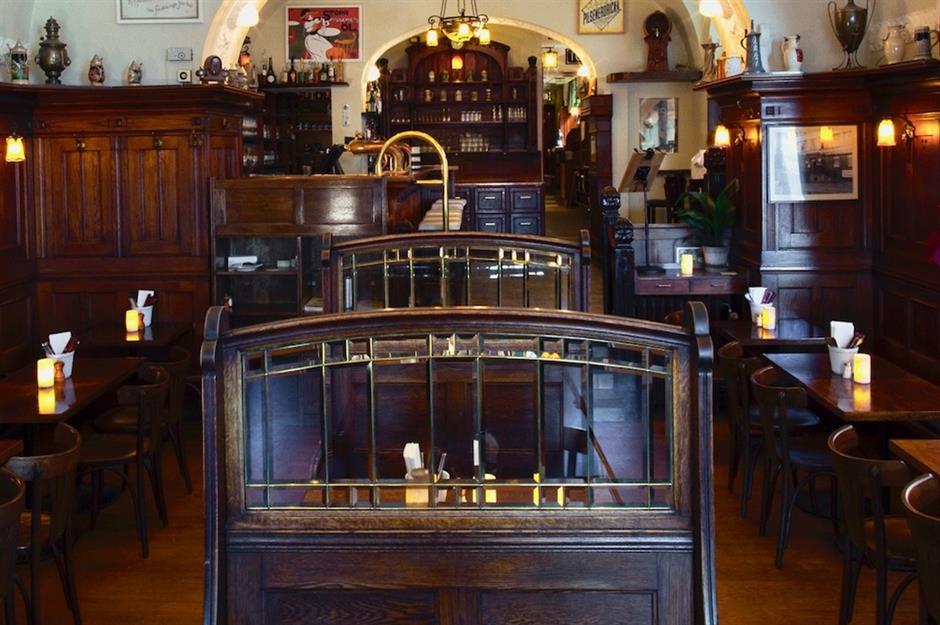
Zum Franziskaner has a fascinating history stretching back to 1421, when it’s claimed a beer cellar was imported to the Swedish capital by German friars. It’s had many incarnations since and settled into its current building in 1910. It still feels as old as time, though, in the best and most elegant way. Wood-panelled walls, booths, alcoves, and shelves heaving under vintage beer tankards all add to the cosy charms. The menu is an appropriate mix of wurst platters and Scandi-style comfort food.
17. Old Commercial Room, Hamburg, Germany
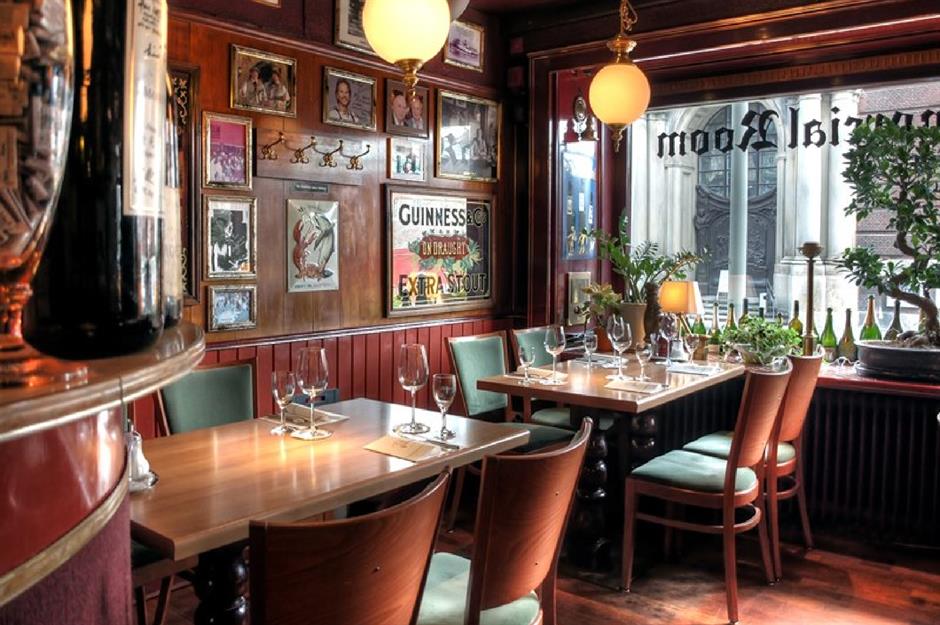
An eclectic roster of famous people who have eaten at the Old Commercial Room, which has stood opposite St Michaelis Kirche since 1795, includes Andy Warhol, Vladimir Putin, Sting and George Clooney. The restaurant’s interior is equally eclectic: a blend of vintage pub, with gilded lettering on the windows and mirrors, and chic, bright-white rooms with walls of contemporary and colourful art, while the menu focuses on regional specialities.
16. Blackfriars, Newcastle upon Tyne, Tyne & Wear, England, UK
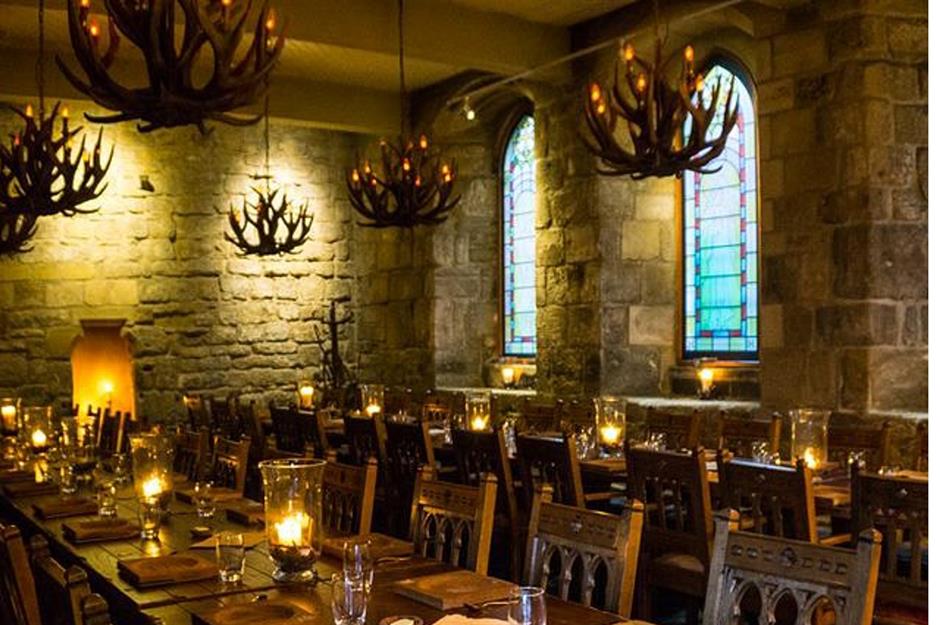
Newcastle is known for medieval streets and taverns, and Blackfriars Restaurant claims to have the oldest dining hall in the country. The current restaurant opened in the former rectory in 2001, serving elevated pub grub, but the Banquet Hall dates back to the 13th century. It was even used by King Edward III to welcome Scottish royal Edward Balliol to the city in 1334 and, like the rest of the restaurant, sticks to its medieval roots with dark wood, chandeliers and intricate wall coverings.
15. La Couronne, Rouen, France
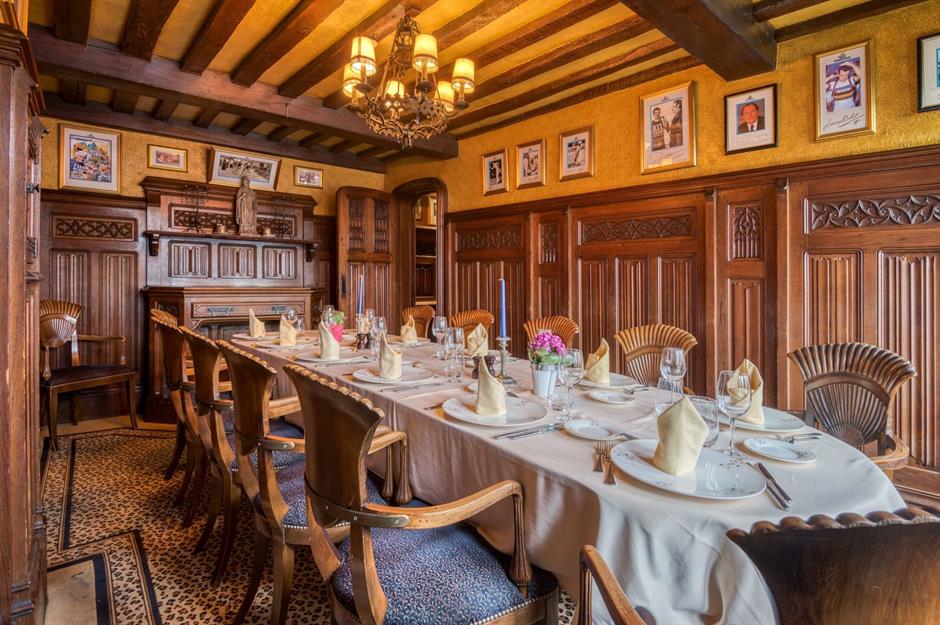
Dating back to at least 1345 according to parchment deeds, classic fine-dining spot La Couronne claims to be France’s oldest still-operating inn. The history is unmistakable, oozing from each tablecloth and every inch of wood panelling. There’s also a wall of photographs signed by famous guests through the years, from surrealist artist Salvador Dali – a fan of the Rouen-style duck – to actress Brigitte Bardot. The menu has an elegance that matches the decor, elevating traditional Normandy cuisine with modern techniques and flair.
14. Majestic Café, Porto, Portugal
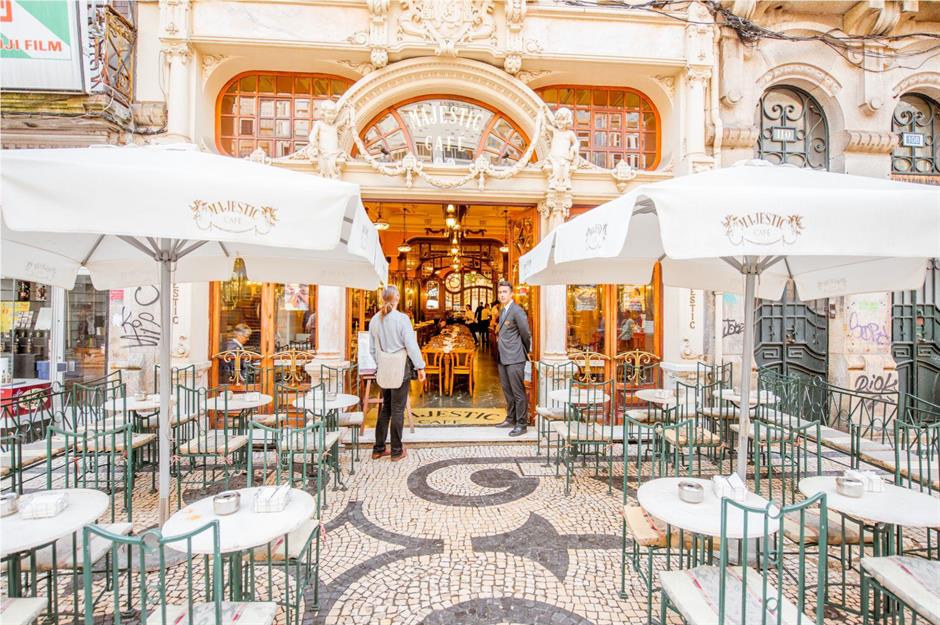
Dating back to 1921, Café Majestic is a Belle Époque gem with mirror-lined walls and opulent period features. People come here to soak up the charming, elegant ambience while they enjoy breakfast, afternoon tea, or the daily menu of omelettes, salads and pastas. Menu highlights include the huge Francesinha sandwich – stuffed with meats, cheese and special sauce – and French toast served with dried fruit.
13. The Ivy, London, England, UK
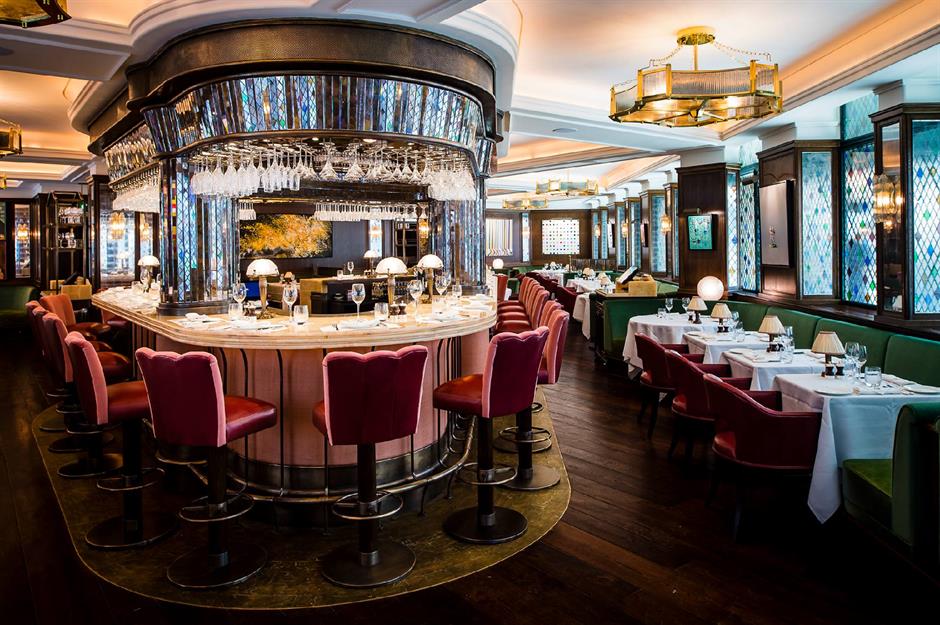
There are now Ivy restaurants around the world, but the original is still arguably the best and most beautiful. Established in 1917, first as an unlicensed Italian café, it moved to its current, larger space in 1929 and has been a favourite among the theatre set ever since (Noel Coward and Laurence Olivier were regulars). The interior is an Art Deco delight, with tables arranged around the fabulous central bar, while the menu now combines its beloved classic British fare like shepherd’s pie with Asian-influenced cuisine.
12. Café de la Paix, Paris, France

As quintessentially Parisian as tiny jazz bars and strolls along the Seine, legendary Café de la Paix has been serving up a classic menu with a side of elegance since 1862. With a prestigious location on the Grands Boulevards and facing the Opéra Garnier, ordering breakfast, lunch, dinner or even just an espresso here is always a wonderful experience. Writers Oscar Wilde and Émile Zola are among the luminaries who have sat within the chic, colonnaded interior.
11. Café Imperial, Prague, Czechia
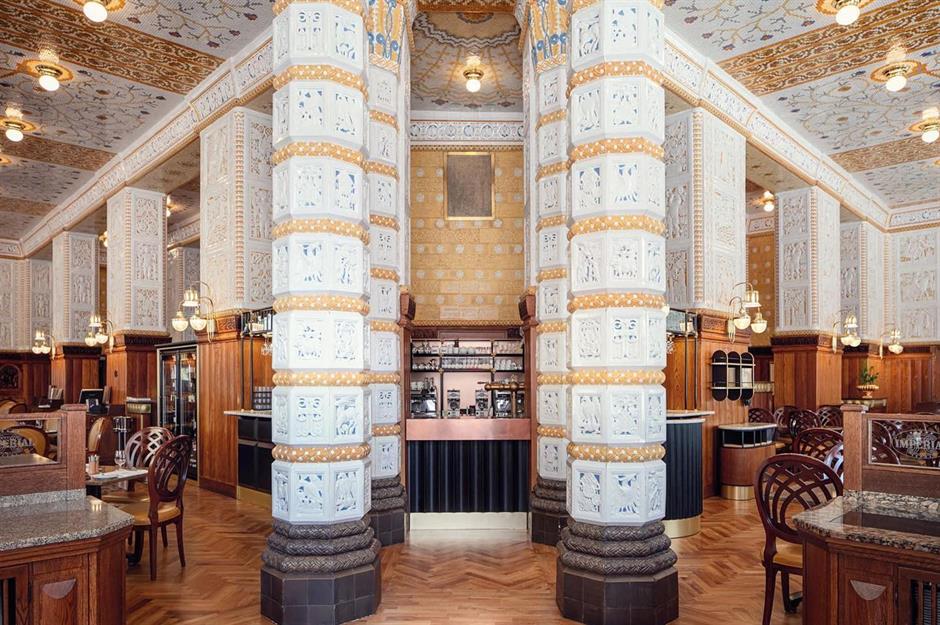
The Imperial is one of the most beautiful spots in Prague. This Art Nouveau jewel dates back to 1914 and still retains its ornate decorations, with Moorish-inspired pillars and walls covered with ceramic tiles. The place is famous for its hand-decorated cakes and the Imperial, made with dates, is a must-try. It also serves salads, sandwiches, soups and more substantial dishes such as wild salmon and beef tartare.
10. Rules, London, England, UK
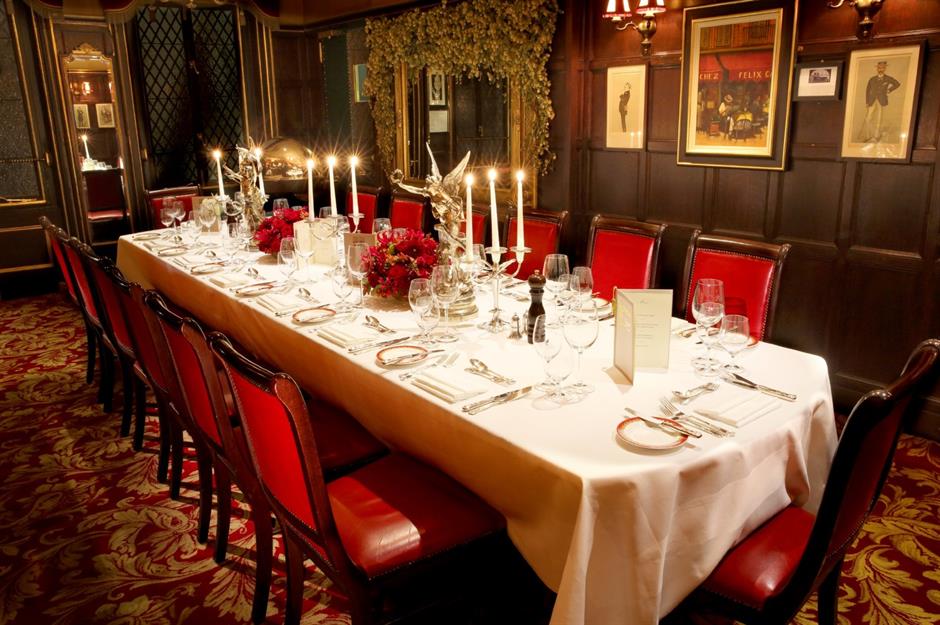
Rules claims to be the oldest restaurant still operating in London, and there’s even a plaque outside that says so. It was opened by Thomas Rule as an oyster bar in 1798, and now serves the shellfish as part of a hearty, traditional menu focused on classic game dishes, pies and puddings. The gloriously opulent, velvety restaurant room has welcomed illustrious diners including Charles Dickens, H G Wells and Sir Laurence Olivier.
9. La Tour d’Argent, Paris, France
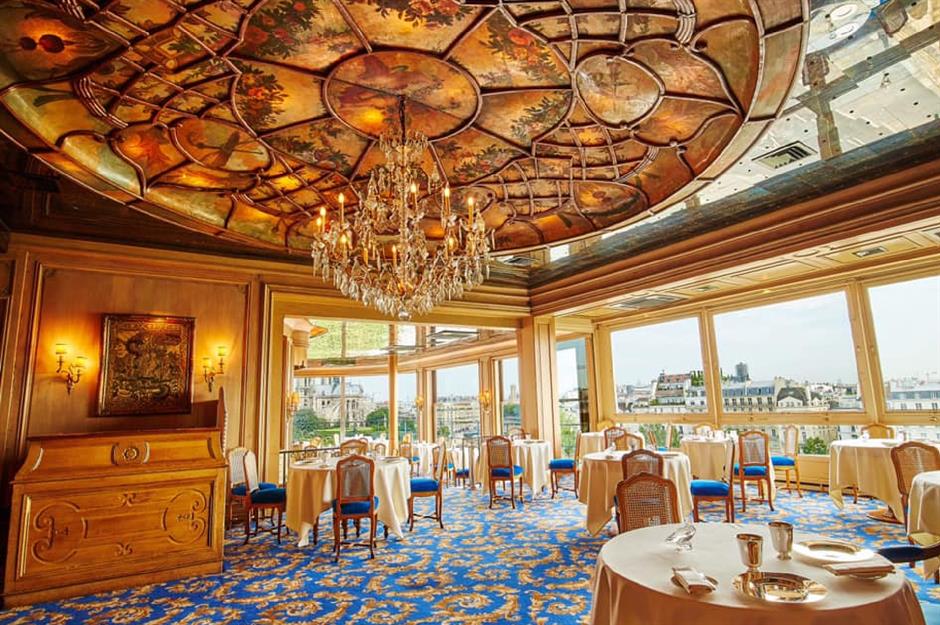
Apparently, the restaurant in 2007 animated movie Ratatouille was inspired by La Tour d’Argent. Not that there’s ever been a talented rat cooking in the kitchens, of course, but presumably because of the history and grandeur of the place. The restaurant was founded in 1582 and frequented by Henri IV, and the food and decor are still worthy of royalty. This is classic French cooking, with duckling prepared at the table a particular speciality, with the impeccably presented dishes served under a beautiful, frescoed ceiling with views over the Seine.
8. New York Café, Budapest, Hungary
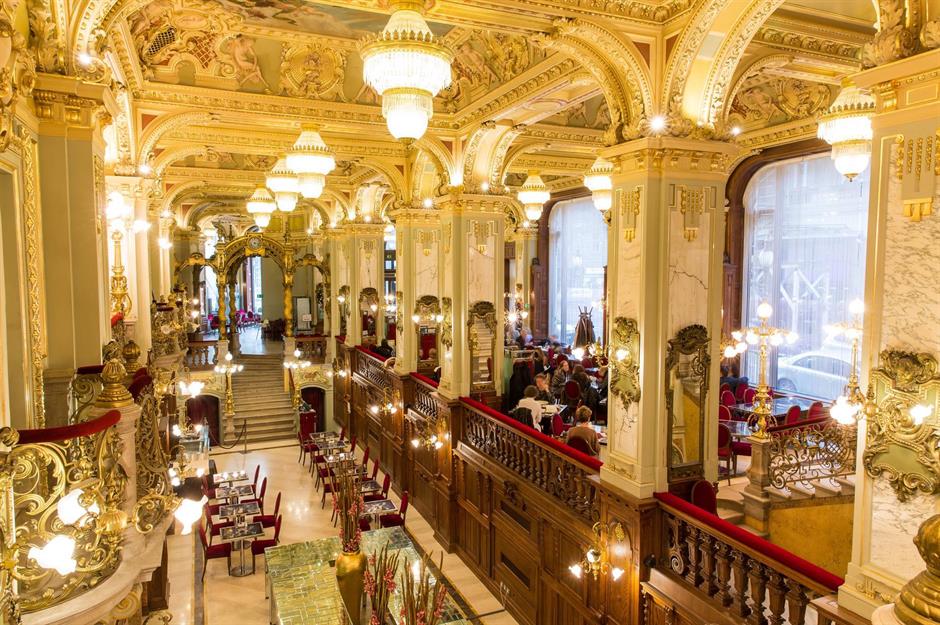
New York Café is an Italian Renaissance-style masterpiece, which opened in 1894 and was popular among writers and intellectuals, with newspapers edited in the upstairs gallery. It fell into disrepair after the Second World War and operated as Hungária from the 1950s until being restored to its former opulent glory – and original name – in 2006. Menu highlights include roasted pink duck, grilled rainbow trout and the 'New York snack selection' consisting of a burger, chocolate cake and lemonade.
7. Wierzynek, Krakow, Poland

This legendary Krakow spot is as opulent – and as storied – as they come. Wierzynek’s glamorous past stretches back to at least 1364. Wealthy merchant Mikołaj Wierzynekan, who the restaurant is named after, hosted an epic 20-day feast to celebrate the wedding of King Casimir the Great’s granddaughter. The restaurant resembles a fine art gallery with its intricate frescoes, stained-glass windows and knights’ armour. The menu has stayed true to its royal roots, too, with sumptuous feasts of roasted meats, pâtés and dumplings finished with fantastical desserts.
6. St. Peter Stiftskulinarium, Salzburg, Austria
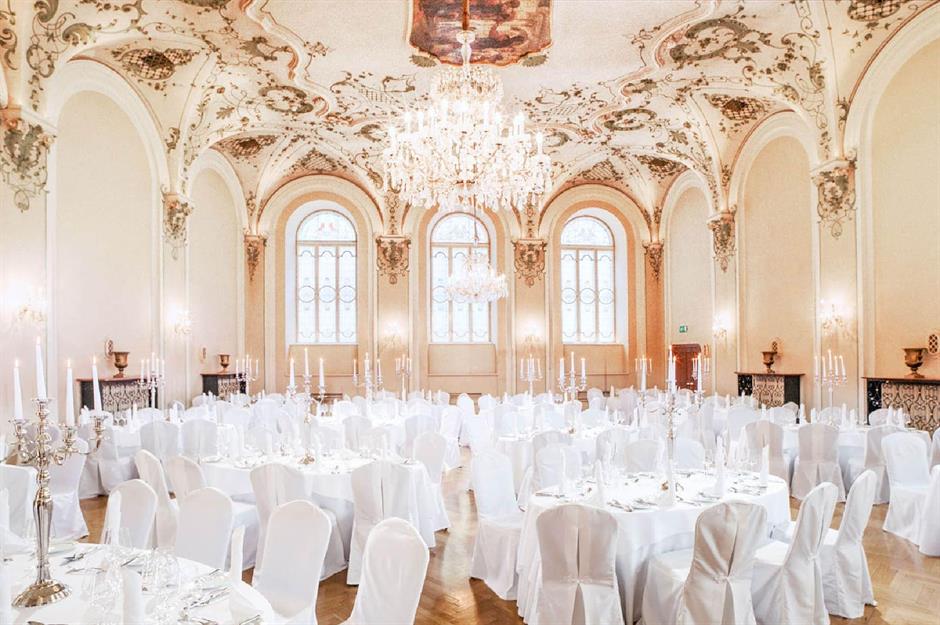
St. Peter Stiftskulinarium claims to be the oldest restaurant in Europe, dating back to at least the year 803 when it was first mentioned in records, and has seen famous diners from Wolfgang Mozart to Clint Eastwood. Tucked within the ancient walls of St. Peter’s Abbey, it first opened as an inn and now serves traditional Austrian comfort food plus a zingy, modern brunch menu. The sumptuous Baroque-style decor, though, has remained beautifully consistent through various renovations.
5. Quattro Passi al Pescatore, Sardinia, Italy
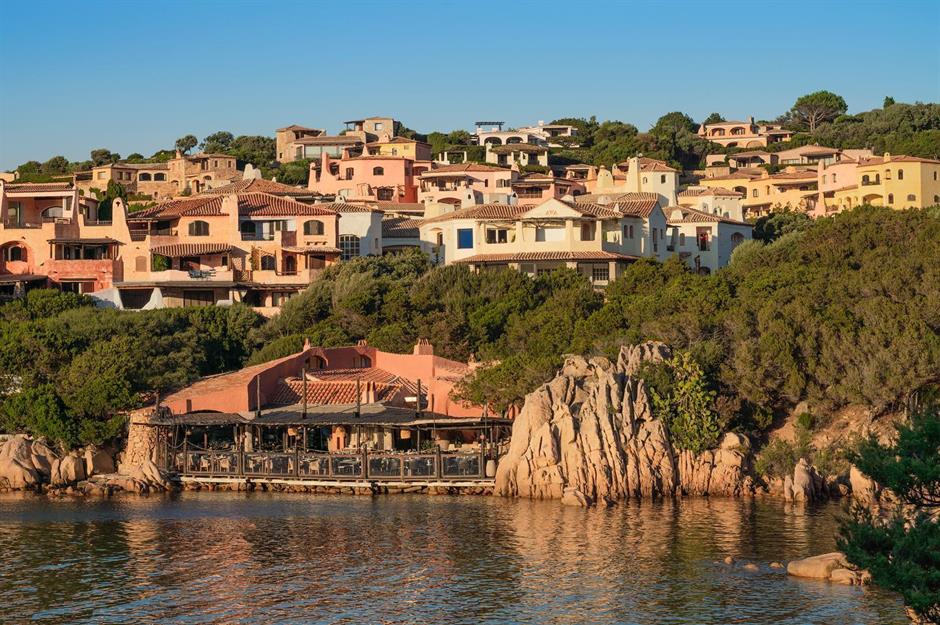
Formerly Il Pescatore, Quattro Passi al Pescatore has attracted the rich and famous since it opened in the seaside town of Porto Cervo in the 1960s. It’s been redesigned since then, but its rustic-chic charm and beautiful views remain unchanged. Tables spill out onto the wooden terrace, jutting over the sea and complementing the pine-clad bay and mountainous backdrop. The menu has elegant seafood dishes like calamari ribbons, lobster spaghetti and oysters.
4. Sobrino de Botín, Madrid, Spain
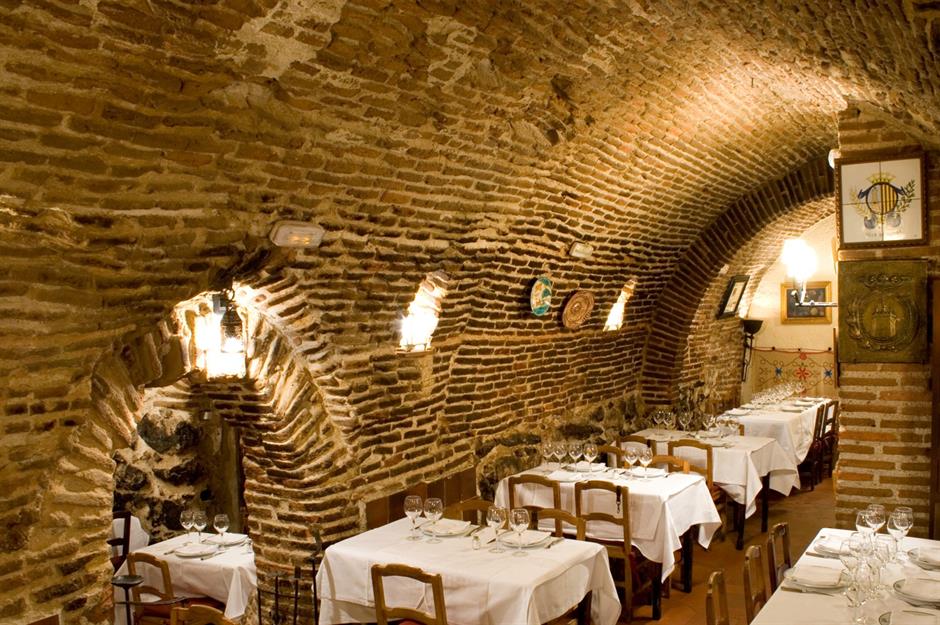
The title of world’s oldest continuously operating restaurant is a hotly contended one, but Sobrino de Botín can officially make that claim, holding the Guinness World Record. Diners feast on roasted meats cooked in a wood-fired oven that has been here since the restaurant opened in 1725, including when painter Francisco Goya worked here and, later, writer Ernest Hemingway dined in the charming, cave-like dining room, where candlelight flickers against stone walls and patterned tiles.
3. The Witchery by the Castle, Edinburgh, Scotland, UK
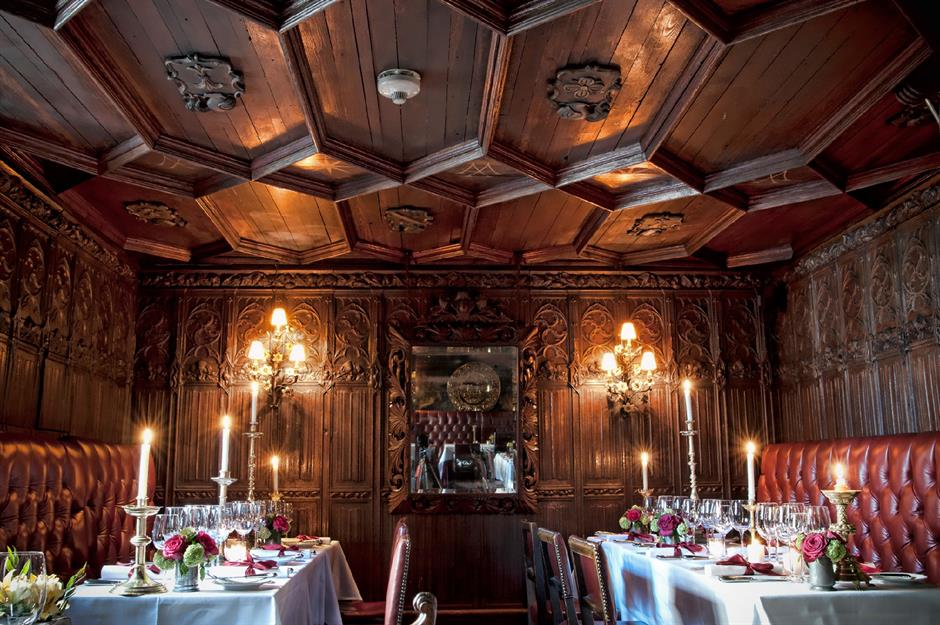
The name doesn’t lie: The Witchery really is right by the castle. The Baroque-style restaurant opened in 1979 and has become something of an Edinburgh icon. The restaurant occupies a 16th-century merchant’s house and blends opulent decor like leather-upholstered chairs with original features including oak panelling, tapestries, thick stone walls and carved wooden ceilings. It’s all very Gothic chic, while the menu of Scottish produce from seafood to game suits the luxurious surroundings.
2. Le Train Bleu, Paris, France

Le Train Bleu was originally built for the Exposition Universelle in 1900 and is still among the most coveted places to dine in Paris. It isn’t just the impeccable French cuisine, with classic dishes like steak tartare and foie gras that makes it such a knockout, it’s also the exquisite setting. Intricate frescoes adorn the carved, gilded ceilings, from which sparkling chandeliers hang, while huge arched windows look over the Seine. The opulent Gare de Lyon restaurant was a favourite of Coco Chanel and Brigitte Bardot, and still attracts a well-heeled and illustrious crowd.
1. Caffè Florian, Venice, Italy
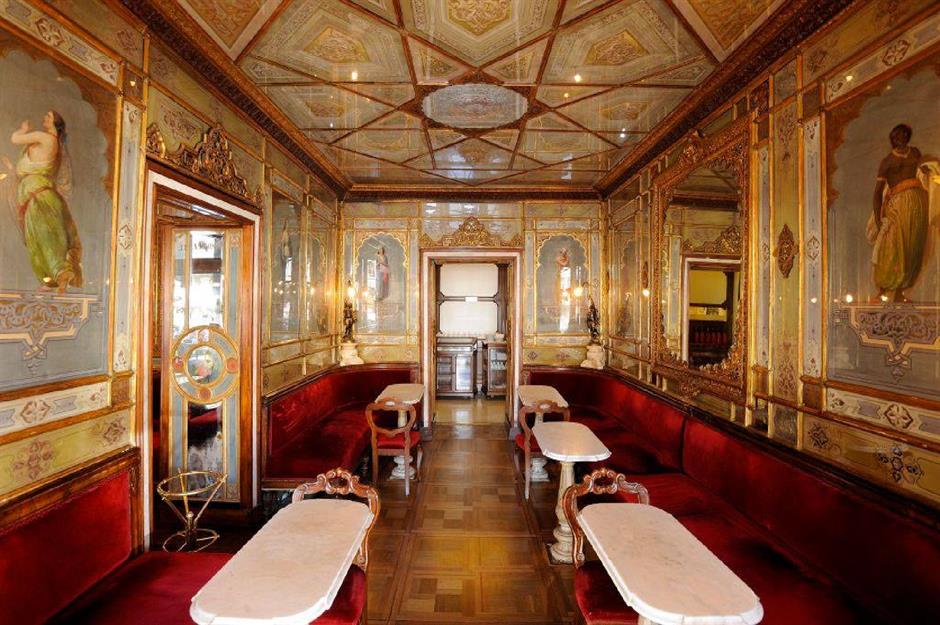
Caffè Florian is a St. Mark’s Square landmark and, while it’s typically busy and filled with tourists, it really is a Venetian icon. One of Europe’s oldest still-operating cafés which opened in 1720, it’s striking from the outside with tables spilling onto the piazza and arched, canopied windows. Inside, however, is a whole other world, with a series of rooms with red velvet banquettes, carved ceilings and gilded mirrors and wall mouldings. There’s more on the menu than coffee, too, with classic Italian brunch dishes, light lunches and indulgent pastries.
Comments
Be the first to comment
Do you want to comment on this article? You need to be signed in for this feature